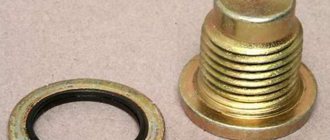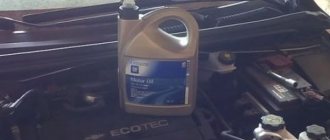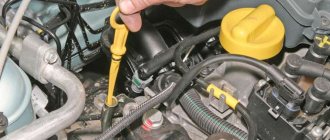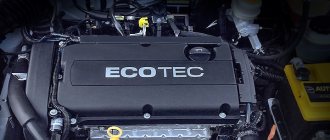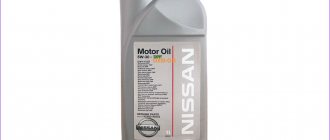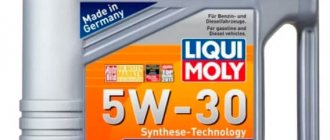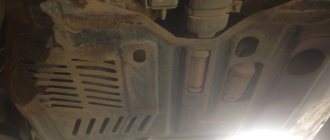Nissan Qashqai is a compact urban crossover, presented in Russia in two models (first and second generation). Each model has undergone restyling and today the lineup looks like this:
- Nissan Qashqai J10 – produced from September 2006 to February 2010;
- Nissan Qashqai J10 restyling - produced for three years from 2010 to 2013;
- Nissan Qashqai J11 – appeared in 2013, the latest models were launched on the market in December 2021;
- Nissan Qashqai J1 restyling – the first sale took place in 2017 and continues to this day.
How to choose motor oil
To replace you will need:
- Oil (for example, Nissan Motor Oil 5W-40, article number KE900-90042, Nissan Motor Oil FS 5W30 A5/B5, article number KE900-99943R or analogues: TOTAL Quartz 9000 5W-40 and ELF Evolution 900 NF 5W-40).
- Oil filter (catalog numbers 15208-9F600 or 15208-65F0A)
- Drain plug washer/gasket (part number 11026-01M02).
Depending on what engine is in the car, we calculate the required volume of liquid. If the engine is 1.6 you will need 4.3 liters. If the engine is 2.0, then a little more fluid will be consumed - 4.5 liters. If your Nissan is consuming oil, you should find and fix the problem, but be prepared for the fact that you will need to have a small amount of liquid to top it up.
In order to find out what kind of oil is poured into the Nissan Qashqai, you need to read the service book, which contains all the necessary information. In addition, you can consult at a dealership or auto service center.
The manufacturer recommends using only original products directly from the Nissan automaker, namely synthetic Nissan Motor Oil 5W-40. Catalog number KE900-90042.
Many car owners are interested in the question of what oil to use if branded oil is not at hand. In this case, you can choose an analogue that matches the original in all technical characteristics and tolerances. You can use complete analogs of the original oil: TOTAL Quartz 9000 5W-40 and ELF Evolution 900 NF 5W-40.
Select the oil filter and drain plug gasket.
To carry out the oil change procedure, you will need: the oil itself, the oil filter and a new gasket for the drain plug.
A few words about the filter element. When choosing it, everyone can focus on their financial capabilities, since different manufacturers have different prices. But, as practice shows, you can rarely notice the difference when using an expensive filter element and a mid-price filter, so the choice is yours. The most popular brands are:
- 15208-9F6OO (NISSAN Oil Filter made in UK);
15208-65F0A (NISSAN Oil Filter made in Japan).
All that remains is to select the appropriate sump drain plug . You can analyze the price range for them by reading the table.
Replacement algorithm
Before you begin, you should inspect the area under the hood. It should be dry, clean, without oil stains or streaks. If any malfunction is detected, it must be corrected immediately.
Replacement must be performed with a warm engine. It is necessary to start the car, warm it up to operating temperature, drive it into a pit and remove the plastic or steel protection.
Draining waste fluid
The filler neck is located at the left edge of the engine. It is necessary to unscrew the neck plug, go down into the pit and place any convenient container under the drainage area. After this, you can begin to remove the drain plug. You will need a 14'' wrench or socket.
It is worth considering the fact that the drain neck is located at the lowest level, so after draining, 150-200 ml remains in the engine. working off. To remove residues, you can use a simple syringe.
Then the oil filter is unscrewed. It is located in the front area of the motor. It is most convenient to perform this action using a special oil scraper (“spider”). If you don't have one, you can use a simple leather belt, an old alternator belt, a bicycle chain, or a flathead screwdriver.
Video of changing oil and filters for engine 2.0:
- Before starting work, it is necessary to warm up the engine.
- We drive the car onto a viewing hole or overpass, unscrew the filler cap.
- First, unscrew the boot fastenings on the left and right with a 10-socket head. In the center, the boot is held on a clip. In order to remove it, you need to hook the central part of the clip and pull it down approximately 8 mm. After which the clip is easily removed from the hole.
- We remove the boot and use a 13 mm wrench to unscrew the bolts securing the motor protection.
- We find a drain hole closed with a plug. Place the prepared container under it and unscrew the plug on the drain hole using a 14 mm wrench or socket.
- Let's leave the container with the old oil under the plug and find the oil filter, which is located in the front part of the engine.
- We remove the filter by turning it counterclockwise (this operation may require a special puller). In this case, you need to place a second container under the filter to drain the oil.
- We install a new filter, cleaning the place where it is installed with a rag and first filling it halfway with fresh oil, as well as lubricating the sealing ring.
- We screw the filter on without additional effort and replace the sealing gasket of the drain plug.
- Using a watering can, pour new oil into the neck. After filling 4 liters, the next portions should not exceed 100 ml; after each topping, check the level on the dipstick.
When the oil level on the dipstick reaches the second mark, there is no need to add more.
Flushing the lubrication system
Flushing is performed only in a few cases:
- When buying a used car, often the buyer simply does not know what was put into the car’s engine and how often replacements were performed by the previous owner.
- If the service replacement interval is more than 15,000 mileage.
- If during operation the motor repeatedly overheats, this can cause precipitation and deposits.
- Replacing synthetics with semi-synthetics.
There are 4 types of flushing the Nissan Qashqai lubrication system:
- Washing with special technical five-minute and seven-minute washes. These are quite aggressive liquids that eat away even the strongest deposits. They can only be used strictly in accordance with the instructions. A significant drawback is the reduction in wear time of sealing seals and clogging of the oil channel with sediment particles.
- Special additives that are poured into a car engine 300-400 kilometers before the expected oil change. They are more gentle than quick flushes, but there is also a risk of channel clogging.
- Engine flushing oil is a fairly neat method of cleaning the engine from sediment and suspended matter. The liquid is poured after draining the waste, after which it is necessary to start the car, let it idle for 20-25 minutes, then turn off the car and drain the flushing oil. A significant drawback is poor cleaning from various deposits.
- Flushing with regular engine oil that the machine runs on. This method is used extremely rarely by motorists due to the high price of original oil, but you can buy any cheap (domestic) synthetic and wash it in the same way.
Before flushing the lubrication system, you need to carefully weigh all the pros and cons, since this procedure can not only cleanse the engine of internal carbon deposits, but also lead to clogging of oil channels.
Do-it-yourself oil change in a Nissan Qashqai engine: video and detailed instructions
If you are the proud owner of a Nissan Qashqai crossover , then you have wondered how often you need to change the engine oil. In accordance with the maintenance regulations for this model, manufacturers recommend carrying out this procedure every 15,000 km , and even more often . Practice shows that it is most rational to change the oil in winter or spring .
Installing a new oil filter, filling with fresh oil
If, before starting work, no leaks were identified that need to be repaired, you can begin to fill in clean oil. The procedure occurs in the following order:
- The drain plug with a new washer is installed in place.
- The O-ring is lubricated with fresh oil, after which a new oil filter is screwed into place.
- Oil is poured through the filler neck in the volume required for a particular engine.
- The liquid level is checked using a dipstick - the level on the dipstick should be halfway between the “minimum” and “maximum” indicators.
- The car is started for 15-20 seconds, after which the engine must be turned off.
- Let the machine stand for 5-7 minutes, then re-measure the level with a dipstick.
After completion of work, it is necessary to update the oil readings.
Replacement
We carry out the oil change operation on a pit or a lift. You need to sit comfortably under the car.
First, unscrew the boot mount. Left and right with a 10 head.
It will be useful: Instructions for performing diagnostics on a Nissan Qashqai car yourself
It is held in the center by a clip. To remove it, you need to pick up the central part of the clip and pull it down about 8 mm. After this, the clip is easily removed from the hole.
Having slightly bent the boot, we see the bolts securing the protection on the front, unscrew it with a 13mm socket.
The rear mounting bolts are loosened using a similar wrench. After this, remove the engine protection.
The oil change should be done with the engine fully warmed up. To do this, start the engine and wait until the temperature reaches the operating level or the cooling fan turns on.
You should unscrew the filler cap on the engine from the engine compartment. Then you need to place a container under the engine sump drain plug and unscrew it completely.
Oil drain plug at 14. Drain the bulk of the oil into the prepared container.
After the oil has completely drained from the pan, i.e. It will drip extremely rarely, remove the oil filter (located on the front of the engine) and let the remaining oil drain from the system.
New consumables.
Clean the filter installation area with a rag. We lubricate its seal with oil and tighten it until there is slight resistance, and then tighten it 2/3 of a turn.
Next, replace the drain plug O-ring and screw the plug into place.
We place the ring on the cork with a platform with a cutout towards the head of the cork, and a solid platform towards the pallet.
Cork with a new washer.
All that remains is to pour new oil into the system.
Despite the fact that the canister with the original oil has a convenient neck, it is difficult not to spill at the very beginning, so you should use a funnel, preferably a high one.
If there is no funnel, then it can be easily made from an empty and clean 1.5-2 liter plastic bottle.
The main principle is not to overfill. Therefore, when 4 liters are filled, it is necessary every 100 grams. check the level using the oil dipstick.
When the oil level on the dipstick begins to reach the second division, you can complete topping up. Close the filler cap and check the oil level according to the BC.
To do this, you need to turn on the ignition and, when the Oil Good message appears, press the “i” button on the steering wheel or TRIP on the instrument panel. The level should be 4-5 bars out of 5.
After this, you need to reset the service mileage, which is displayed on the BC when the ignition is turned on. On the restyled version, it is reset through the corresponding menu when turning TRIP.
On the pre-restyling one, you need to do the following:
1) With the ignition off, press and hold the TRIP button on the instrument panel; 2) Turn on the ignition while continuing to hold TRIP; 3) When the spanner interval value starts flashing, you need to release TRIP and press it again. In this case, the service mileage value will be reset to 15,000 km; 4) To change the value of the service interval, rotate TRIP in different directions depending on the value.
Replacement frequency
In accordance with the standards developed by the manufacturer, replacement should be carried out once every 15 thousand km. For low mileage, change the oil once a year.
The oil volume depends on the type of engine - in the gasoline version of the Nissan Qashqai, the oil volume varies from 4.3 to 4.8 (including the oil filter), a diesel engine takes from 4.7 to 7.4 liters of oil.
If we talk about what kind of oil to fill, the company recommends using original branded products and components. If it is not possible to purchase the original, you can select analogues in accordance with the service book.
Viscosity indicators may vary depending on the region of operation and its climatic features. For Nissan Qashqai cars, oils with the following values are suitable: 5W-30, 5W-40, as well as 0W-20 oil.
Procedure for replacing engine oil and filter Nissan Qashqai
- First of all, warm up the engine to operating temperature (60-90 degrees). This is necessary in order to drain the wear products located in the engine crankcase. As the crankshaft operates, they rise from the bottom and mix with the oil.
It has been confirmed that if you pour new oil into a dirty engine, the oil life is reduced by 20%, which means that it needs to be changed more often.
2. Place the car on a lift (pit or overpass).
3. Remove the plug from the oil filler neck (in front of the engine on the left).
4. Unscrew the bolts securing the crankcase protection and move it to the side.
5. Place a container with a volume of 5 liters or more under the drain plug and unscrew the drain plug with a 14 liter wrench.
Before starting work, the engine is warmed up, so the oil temperature is about 90 degrees, which can cause burns. Therefore, when unscrewing the plug, prepare for the fact that at the last stage you will need to abruptly remove your hands from under the stream of oil.
6. Once the engine oil has been drained from the engine, proceed to replace the oil filter. It is located in front of the radiator on the left side of the engine. To remove the filter, you will need an oil filter puller. There will always be oil in the filter element, so to prevent oil spillage, tilt it down slightly before removing the filter.
Sometimes there are oil leaks in the filter area. However, this is not always related to the oil filter and the quality of its installation. The design of the filter mount on the Nissan Qashqai provides an additional part through which the coolant passes for additional heating of the oil during startup. The design looks like this: engine, gasket, oil heating element from coolant, filter. At the junction of the element with the engine, oil is forced through the gasket, forming oil smudges. The adapter is attached to the engine with a bolt onto which the oil filter is screwed.
7. Prepare and install a new oil filter. For this:
- clean the filter seat on the engine from remnants of the old gasket and oil stains;
- to saturate the filter element, pour a little oil inside the filter;
- so that the rubber seal on the filter sits evenly, lubricate it with oil;
- Screw the filter into place by hand as tightly as possible.
8. Wipe any remaining oil around the drain hole and screw the drain plug back into place.
9. Install the engine crankcase protection.
10. Position the car so that access to the engine compartment is convenient (lower the car from the lift) and it is on a level surface.
11. With a funnel in the filler neck, pour 4 liters of engine oil, and then top it up, checking the oil dipstick to the middle between the MIN and MAX marks.
Something else useful for you:
12. After waiting 5 minutes, start the engine and let it run. As soon as the oil pressure gauge goes out, turn off the engine.
13. Wait 10-15 minutes for the oil to drain into the crankcase and check its level; if necessary, add oil to the middle between the marks on the dipstick.
14. Dispose of the replaced filter and oil in a designated place.
Video: Nissan Qashqai 1 6. Changing oil and filters
Possible problems
Various leaks are extremely rare and are repaired as usual.
Often, owners of cars of this brand notice that the car eats oil. The reasons can be very diverse and can only be determined through examination and diagnosis. This is especially true for cars whose mileage has exceeded 100,000. If the oil waste from replacement to replacement is insignificant, then the simplest solution would be to select an oil with the least waste or use a special flushing LIQUI MOLY Pro-Line Motorspulung.
Owners of the MR20DE engine are advised to regularly check the dipstick, as these engines are particularly “gluttonous”. In addition, the car is equipped with an oil level sensor, which displays information on the dashboard. The oil pressure sensor will notify you of an emergency drop in pressure in the event of any malfunction.
If the oil consumption is high, this indicates that the rings are stuck. This problem regularly occurs on cars produced in 2010 and older. The concern later corrected this problem.
Level check
First you need to make sure that the on-board computer is working correctly. Turn on the ignition, and after you see the inscription “Oil Good” , press the “TRIP” on the panel. The level on the indicator should display at least 4 bars out of 5 . Now reset the service interval. To do this, we perform the following operations:
- press and hold “TRIP” , wait for the number to start flashing
- release the button and press it again.
It will be useful: Replacing high-voltage wires on a Nissan X-Trail with your own hands - Instructions for replacing high-voltage wires on a Nissan X-Trail car


